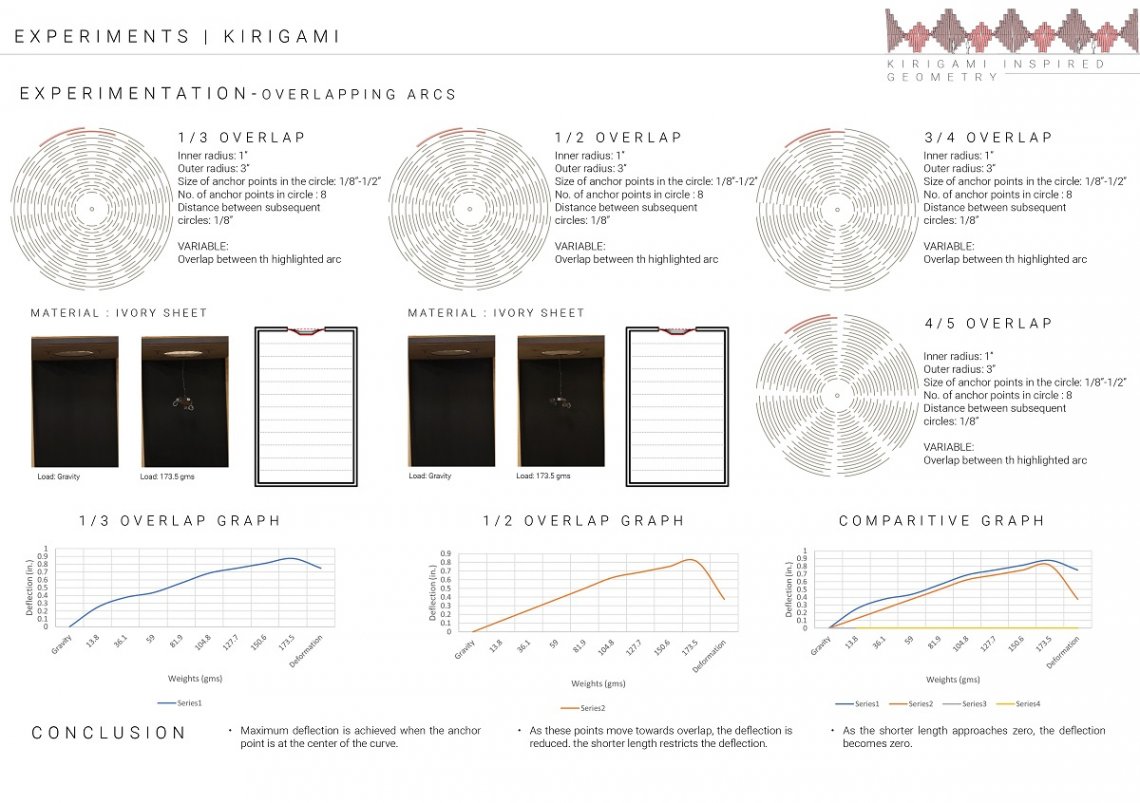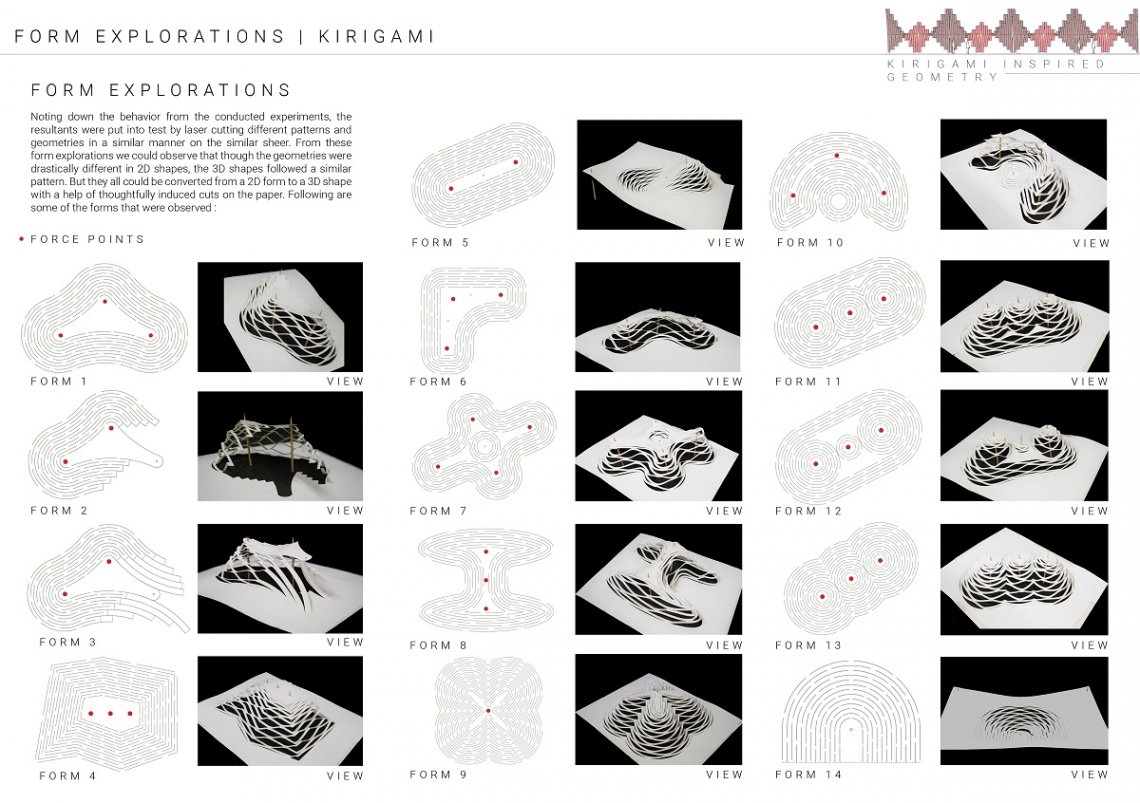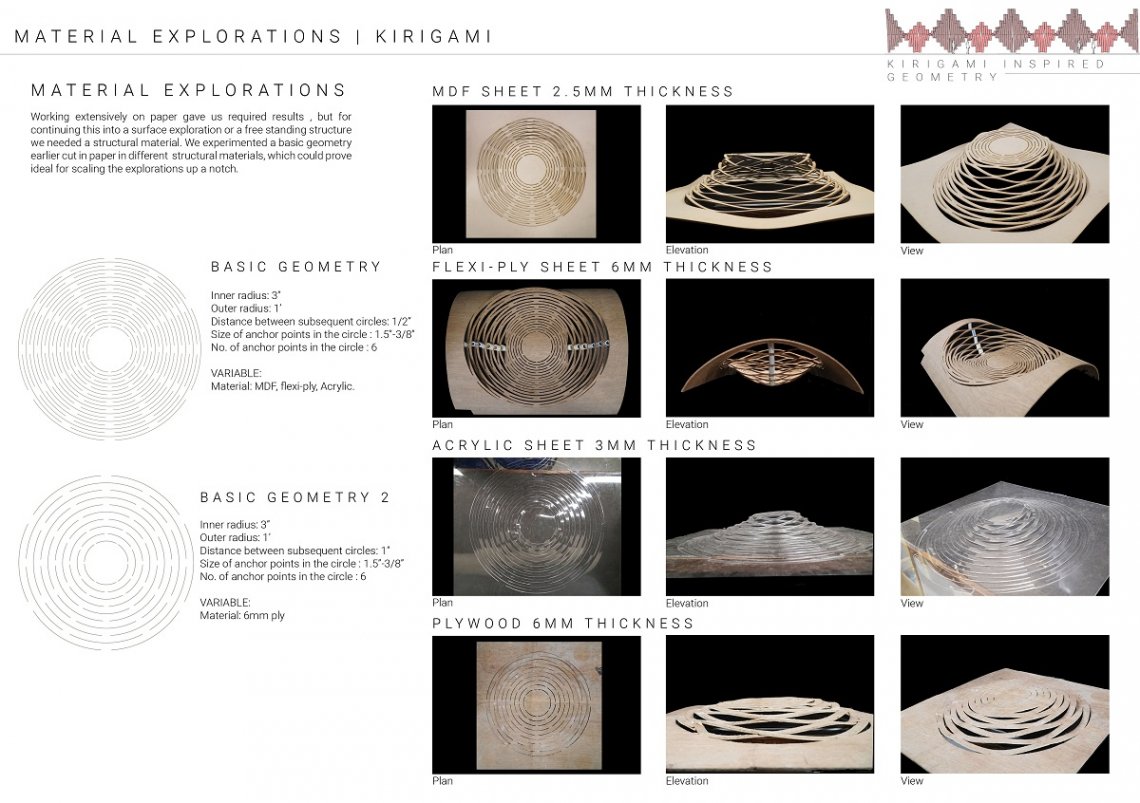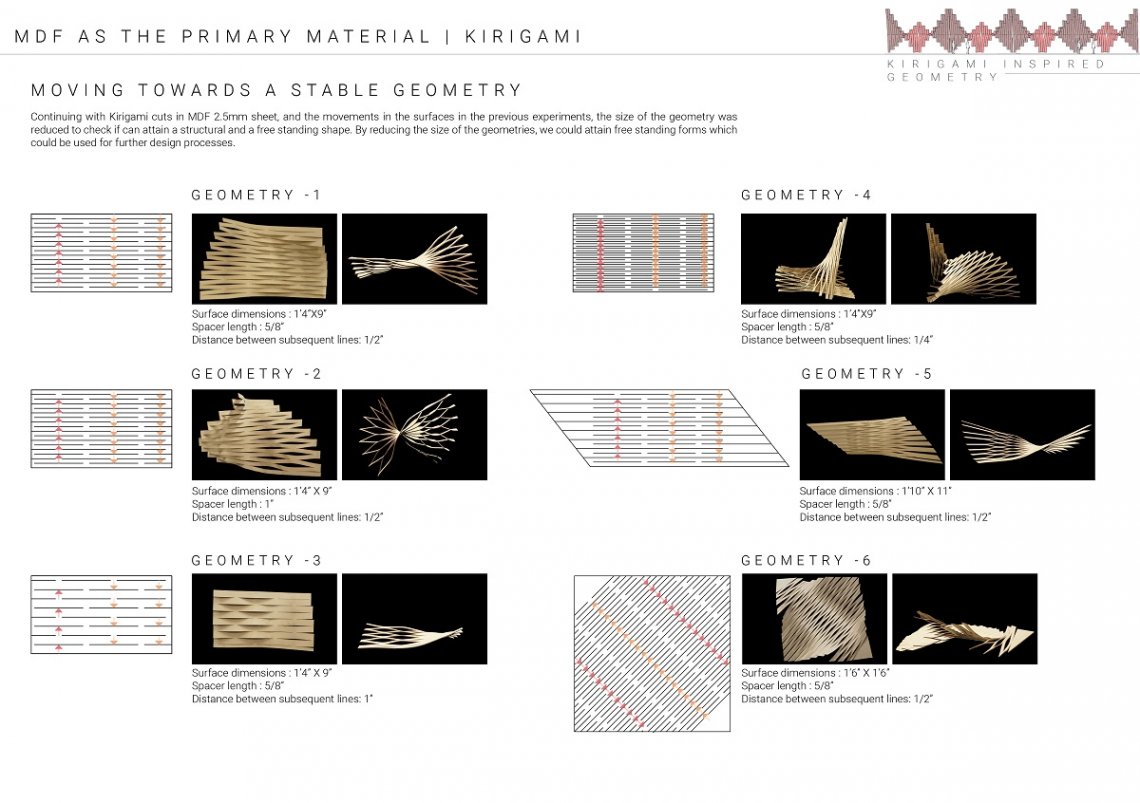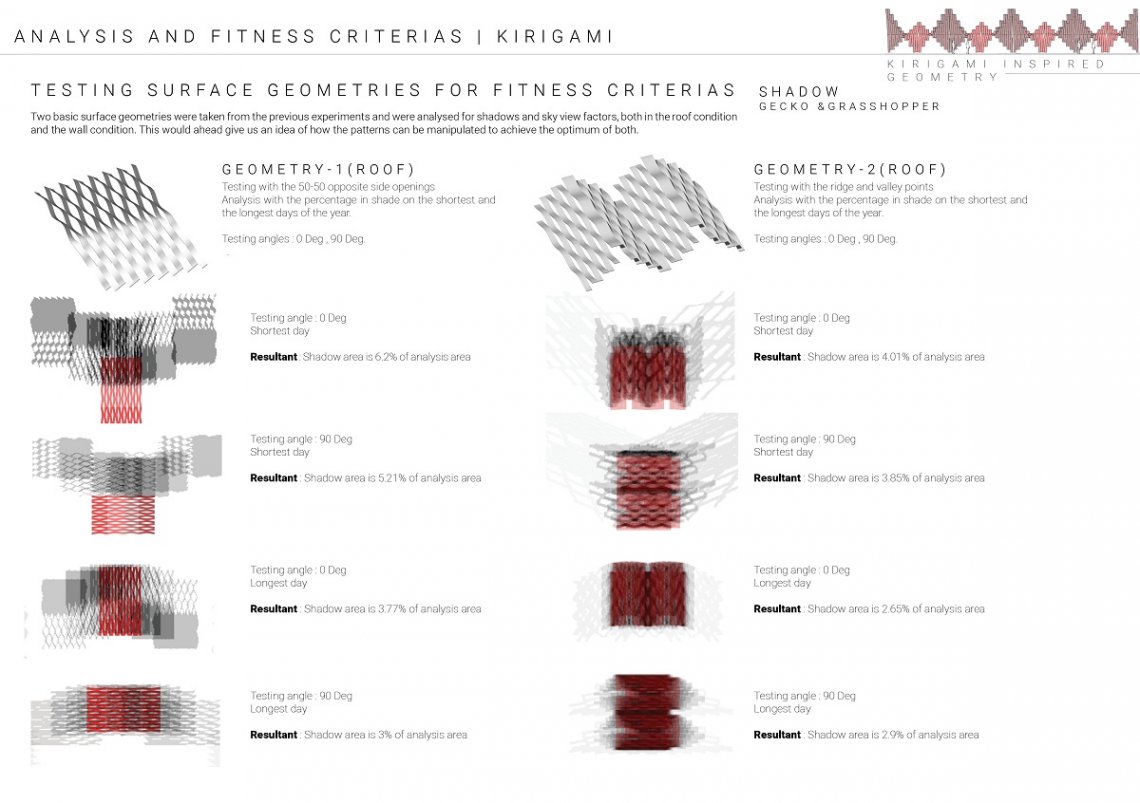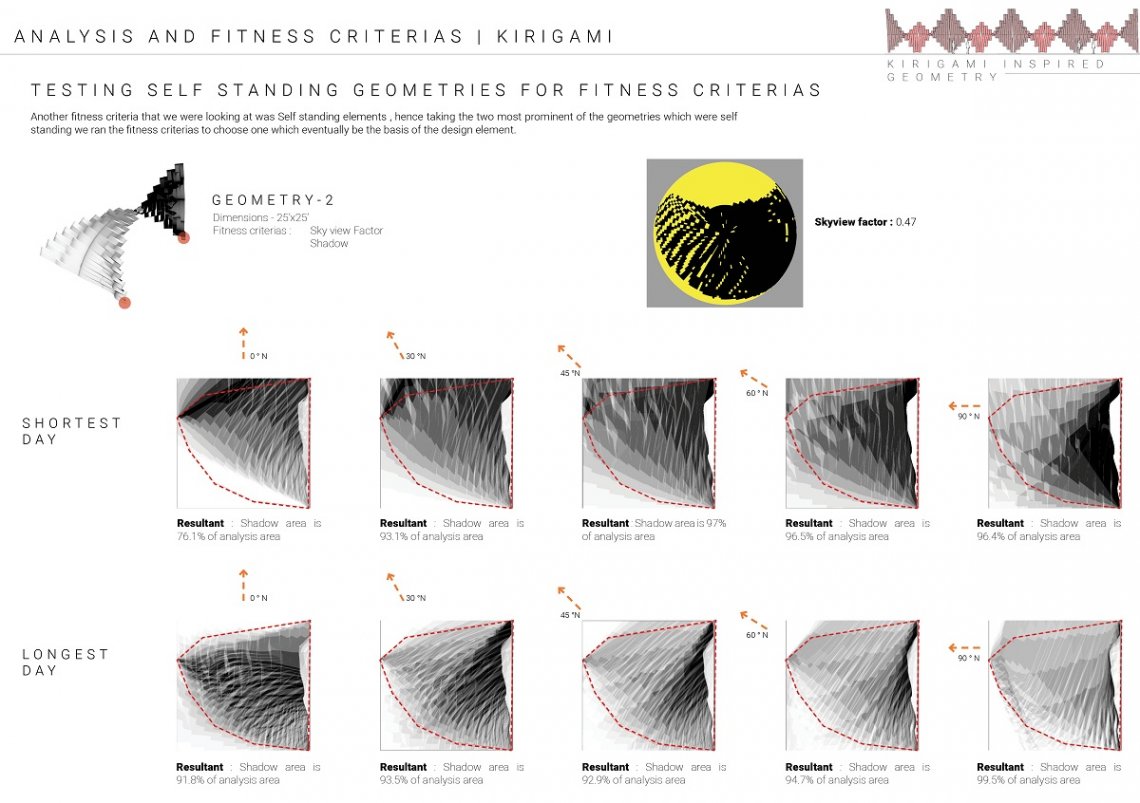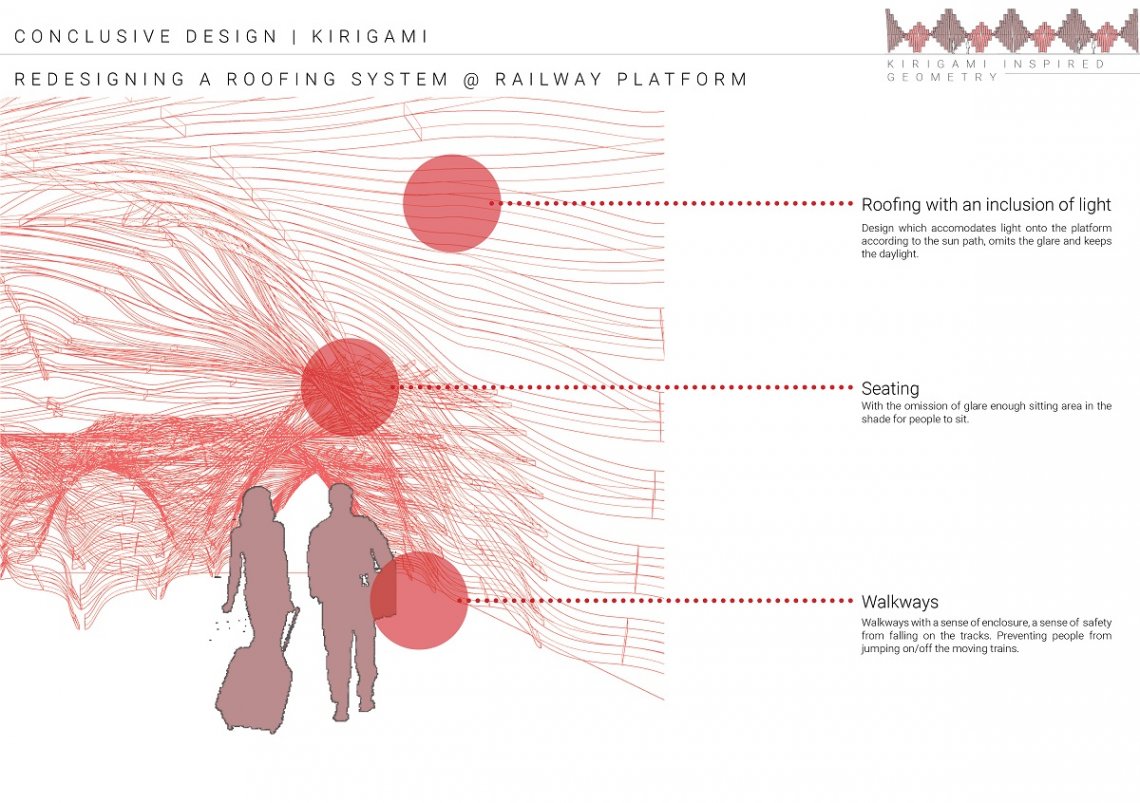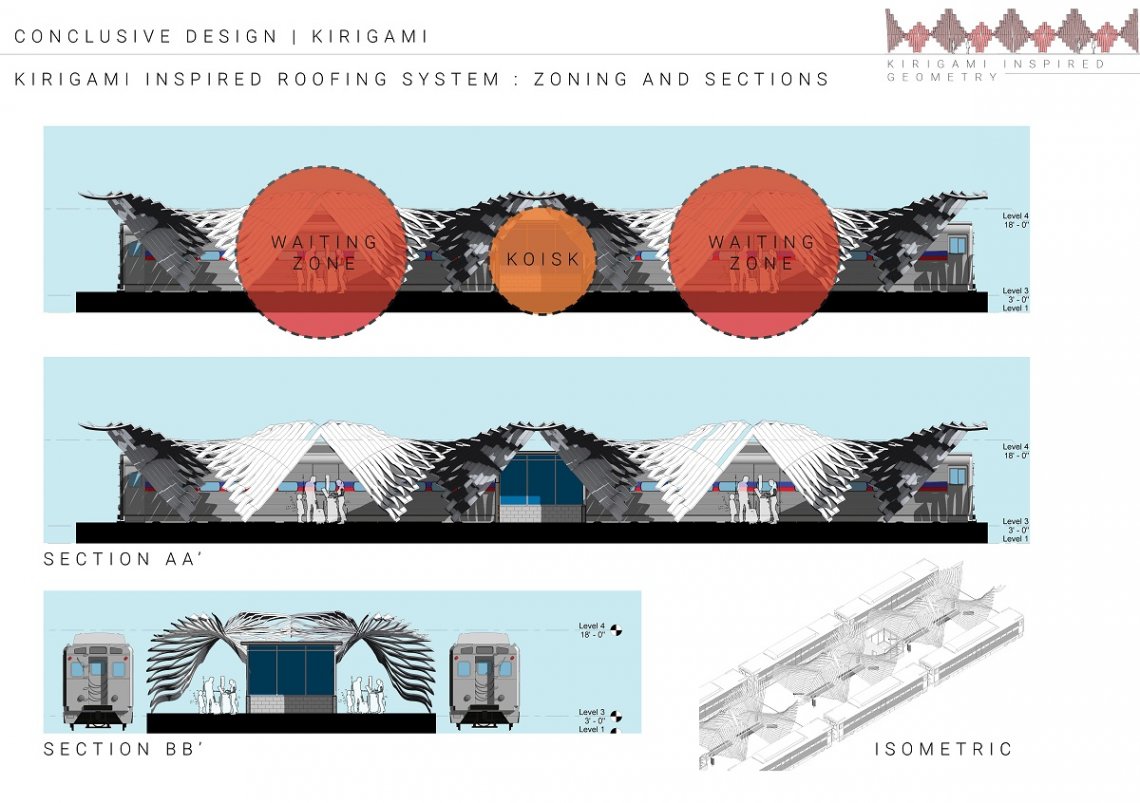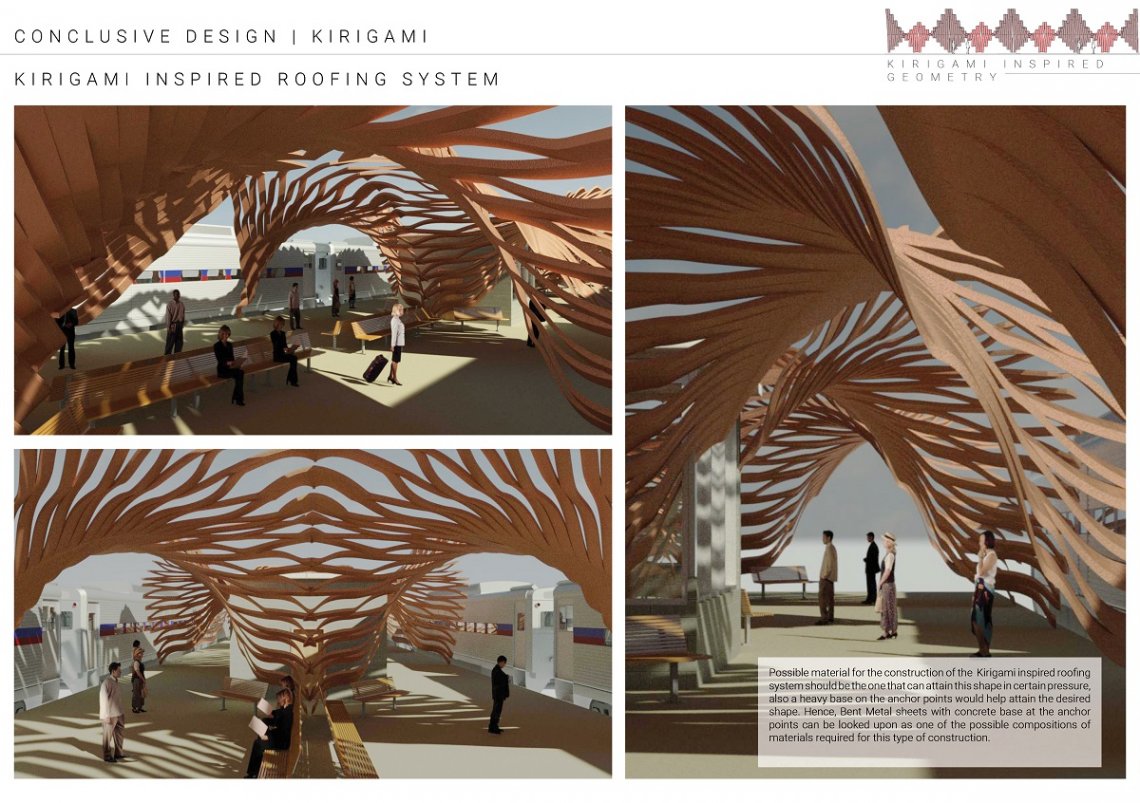Your browser is out-of-date!
For a richer surfing experience on our website, please update your browser. Update my browser now!
For a richer surfing experience on our website, please update your browser. Update my browser now!
Kirigami , coined from the Japanese words kiri “cut,” kami “paper” is a variation of origami that includes cutting of the paper, rather than solely folding the paper to obtain 2-dimensional symmetrical patterns (cutting a folded base) or 3-dimensional structure, without using glue. The key principle of Kirigami is using a single sheet of paper that can then been cut. This technique transforms a simple plane into a 3-dimentional surface, altering the structure and function of the base material. The simple act of cutting alters static behaviours of the materials into performant ones. On applying a sufficient amount of force, the material tends to have a resultant deformation on removal of the force (subjected to the inherent properties of the material being manipulated). The project pursues an understanding of the technique to obtain a geometrical control of the material through cutting and to transform a planar surface to a 3D landscape under the applied force, making a volume from a plane. Select evaluation parameters dictate the evolutionary path of the prototypes and materials. The result is an amalgamation between the atmospheric and spacial qualities of the form generated through Kirigami and the narrative of a Railway station platform.

